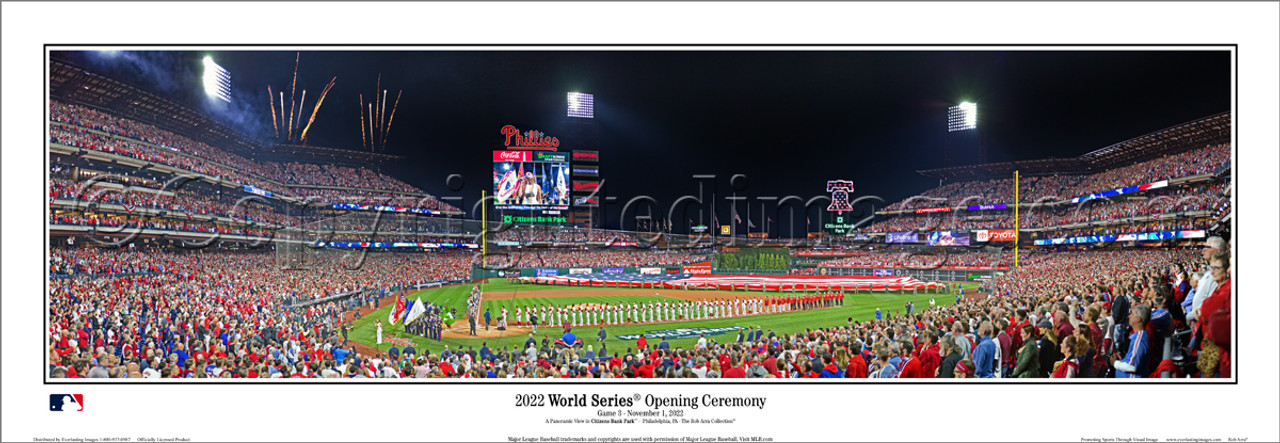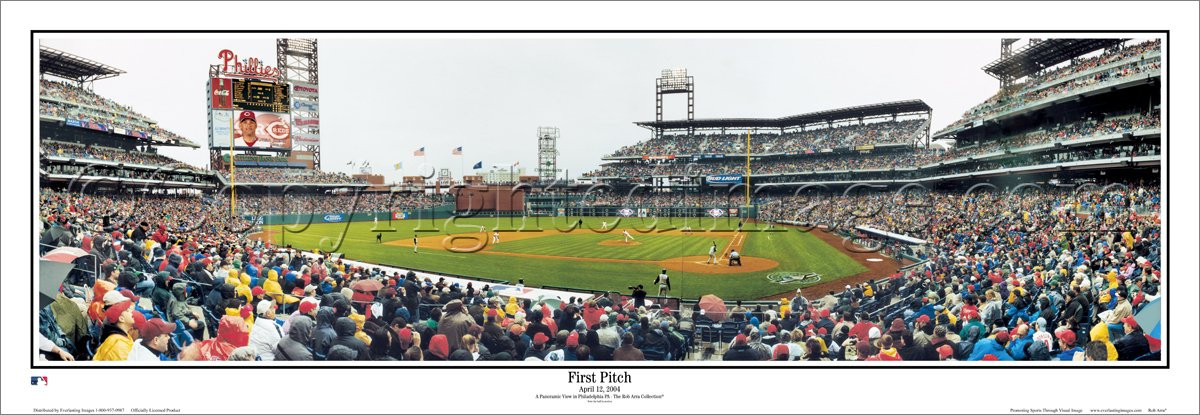If ever a team needed a new stadium during the ballpark construction boom of the 1990s and early 2000s, it was the Philadelphia Phillies. For more than three decades, the Phillies shared the massive multi-purpose Veterans Stadium with the Philadelphia Eagles (NFL). Not only was the stadium enormous, with a seating capacity exceeding 60,000, but it was also infamous for having the worst turf in baseball. Players often complained that the Astroturf felt like playing on concrete. During the overlap of baseball and football seasons, fans could even see the outline of the football gridiron across the field.
In the late 1990s, the Phillies began pursuing the construction of a baseball-only facility. Three potential sites were considered: Chinatown, a downtown location known as Liberty Yards, and a site adjacent to Veterans Stadium. Ultimately, the Philadelphia Sports Complex site was chosen, which also became the location of the Eagles’ new stadium, Lincoln Financial Field. Philadelphia’s City Council approved the construction of both stadiums, financing them through a 2% rental car tax, primarily paid by visitors. The Phillies agreed to cover construction overruns and maintain the ballpark. Like many teams, the Phillies sold naming rights to the new venue, securing a $95 million, 25-year deal with Citizens Bank.
Citizens Bank Park’s design features multi-story buildings housing fan facilities, team offices, and services, which surround the grandstand bowl. These structures face 11th Street to the west, Pattison Avenue to the south, and Darien Street to the east. To the north, lower-scaled buildings along Hartranft Street create an open-air concourse, while landscaped entrance plazas at the four corners of the ballpark welcome fans. Each plaza offers a distinct character and focal point.
| MEMORABLE MOMENTS AT CITIZENS BANK PARK |
|
The Philadelphia Phillies officially opened Citizens Bank Park on April 12, 2004, against the Cincinnati Reds. The ballpark has a seating capacity of 43,035, with three main levels: the lower deck, the suite level, and the upper deck. The main grandstand stretches from the left-field foul pole to home plate, extends to the right-field foul pole, and continues into right-center field. The upper deck has a unique break along the first-base side, bringing those seats closer to the field. Additional seating is located behind the left-field fence. The seating bowl features distinctive angles reminiscent of Shibe Park, and the main HD video scoreboard is located above these seats. Nearly 400 bleacher seats sit on the roof of the outfield pavilion, offering fans a view of the downtown Philadelphia skyline beyond the center-field fence. The bullpens, designed with a split-level setup, are located in right-center field.
One of the park’s most iconic features is the massive Liberty Bell in right-center field. Towering 50 feet high and 35 feet wide, the bell swings and lights up after every Phillies home run. Positioned 100 feet above street level, the bell’s neon edges pulsate, and its distinct ring echoes throughout the park, delighting fans.
Another standout feature is Ashburn Alley, located in the outfield concourse. Named after Hall of Famer and Phillies broadcaster Richie “Whitey” Ashburn, this festive area spans 625 feet in length and covers 50,000 square feet. It features a street-fair-style atmosphere with picnic areas, family-friendly amenities, clear views of the field, and a special viewing area overlooking the bullpens. Ashburn Alley also honors the Phillies’ history with statues of team legends Richie Ashburn, Steve Carlton, Mike Schmidt, Harry Kalas, and Robin Roberts.
Since its opening in 2004, Citizens Bank Park has undergone several upgrades. After the 2005 season, the Phillies increased the left-center field dimensions from 369 to 374 feet by removing 200 seats from the first two rows. Before the 2011 season, a new HD video scoreboard was installed, which was replaced in 2023 with an even larger 152-foot-wide by 86-foot-tall videoboard.
In 2018, the Phillies invested $30 million to add fan-friendly amenities to the ballpark. These upgrades included “The Yard,” a 13,000-square-foot interactive kids’ baseball experience featuring a Wiffle ball field, climbing wall, and other activities in Ashburn Alley. Additional picnic-style seating was introduced in center field, while the left-field plaza received a Wall of Fame showcasing oversized replicas of the 1980 and 2008 World Series trophies and large statues of the team’s retired numbers.
With its modern amenities, rich history, and fan-focused design, Citizens Bank Park offers a premier baseball experience and stands as a testament to the Phillies’ storied legacy.




























